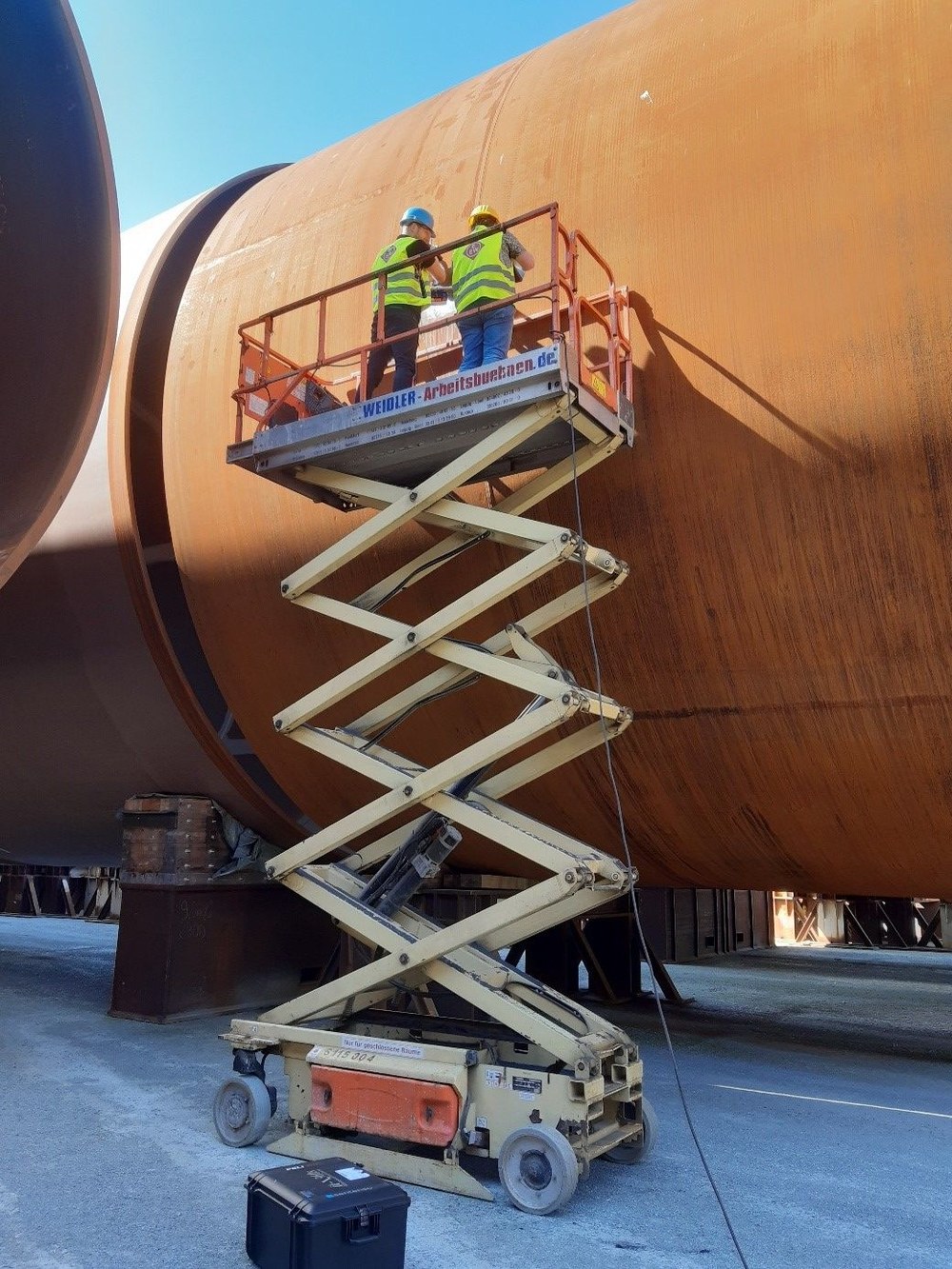The Institute of Maritime Energy Systems in the field at EEW SPC GmbH in Rostock

- DLR investigates the fatigue life of welded joints in monopiles
- Data sets of residual stresses, the microstructure and geometric parameters are to be taken into account for the evaluation of fatigue strength
- Data will serve as input for training an artificial neural network
- Focus areas: Energy, offshore wind farms
Offshore wind farms play a key role in the transition away from fossil fuels. During their construction, foundations anchored firmly in the seabed, so-called monopiles made of pipe segments welded together, are used. During the planned service life of 25 years, the monopiles and in particular the welded seams are subjected to cyclical mechanical loads from wind and waves.
In this context, the DLR Institute of Maritime Energy Systems, together with its partners Vattenfall Windkraft GmbH and Fraunhofer IWM, is researching the possibilities for reducing the manufacturing and maintenance costs of offshore wind turbines and the fatigue life of welded joints as part of the joint project "Reducing the manufacturing and maintenance costs of offshore wind turbines by means of inline inspection and analysing the fatigue life of welded joints using machine learning methods".
Transferring the findings from small samples to monopile welded joints
With the aim of investigating the transferability of the findings from small samples to real component sizes, residual stress measurements were carried out on monopile welded joints at EEW SPC GmbH in Rostock. The residual stresses determined are currently being analysed and will serve as input for training an artificial neural network. Furthermore, data sets of the weld seam geometry and the microstructure are to be included in the analysis.
By taking into account the actual conditions at the welded joint, higher fatigue strengths and a longer service life can be assumed in the structural design, which ultimately leads to lower resource requirements.
Energy transition, wind energy, offshore wind farm, fatigue, reliability, monopiles, residual stresses
